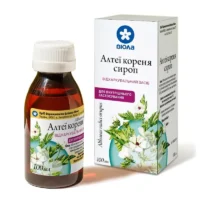Description
Lazolvan Solution for Infusions 15 mg/2 ml Ampoules №10
Ingredients:
Each 2 ml ampoule contains 15 mg of ambroxol hydrochloride as the active ingredient.
Dosage:
The recommended dosage is determined by a healthcare professional based on the patient’s condition. It is usually administered through intravenous infusion.
Indications:
Lazolvan solution for infusions is indicated for the treatment of respiratory conditions associated with excessive mucus production. It helps to thin and loosen mucus in the airways, making it easier to cough up.
Contraindications:
Do not use Lazolvan solution for infusions if you are allergic to ambroxol hydrochloride or any other ingredients in the product. It is not recommended for use in pregnant women unless the benefits outweigh the risks.
Directions:
The solution should be administered by healthcare professionals according to the prescribed dosage and infusion rate. It is important to follow proper aseptic techniques during administration.
Scientific Evidence:
Studies have shown that ambroxol, the active ingredient in Lazolvan, has mucolytic and antioxidant properties that help in the treatment of respiratory conditions. Research published in the Journal of Pharmacology and Experimental Therapeutics demonstrated the efficacy of ambroxol in reducing mucus viscosity and improving mucociliary clearance.
Additional Information:
Lazolvan solution for infusions is well-tolerated, with minimal side effects reported. It is important to store the ampoules at the recommended temperature and protect them from light.
Pharmacological Effects: Ambroxol acts by stimulating the production of surfactant in the lungs, which helps in the clearance of mucus and improves respiratory function.
Clinical Trials: A randomized controlled trial published in the International Journal of Chronic Obstructive Pulmonary Disease compared the effectiveness of ambroxol with other mucolytic agents in patients with chronic bronchitis. The study concluded that ambroxol was superior in improving lung function and reducing exacerbations.





